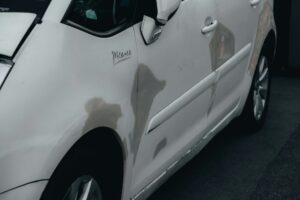Using AI To Fake Van Insurance Claims Could Land You 10 Years in Prison, Experts Warn
Posted by: electime 29th October 2025
 MoneySuperMarket shares tips for van drivers to accurately document damage for insurance claims
MoneySuperMarket shares tips for van drivers to accurately document damage for insurance claims
With artificial image generation software like GPT-4o now readily available, van insurance experts at MoneySuperMarket are warning that people who use the technology to make fraudulent claims would face severe consequences, including prison.
The image generation skills of GPT-4o and other AI image generators have sparked viral trends across social media. One Instagram account, ‘Evolving AI’ shared how easily fake damage can be artificially generated onto an image of a real vehicle, highlighting how Chat-GPT and other AI image generators could lead to an increase in insurance fraud.
What are the consequences of using AI images on insurance claims?
There were over 617,000 Google searches in the past month for ‘AI image generation’, an increase of 258 per cent in the past year. Though many of these are harmless, fraudsters trying to fool insurance providers could face harsh punishments if they are found to have used AI tools to digitally manipulate their images.
Sara Newell, van insurance expert at MoneySuperMarket, explains: “Making fraudulent claims using AI tools is insurance fraud and is a criminal offence under the Fraud Act 2006. Offenders who are caught using artificially generated images to make claims could face imprisonment of up to 10 years and a criminal record. Fraudsters who think they will get away with claims because this is new technology should be aware that they could be brought to justice years down the line.”
“If you do need to make an insurance claim, it’s important that you accurately document the damage – and do not apply any filters or edit images, even if it’s just to sharpen them.”
Tips for taking photos of van damage for insurance claims
- The best time to take photos of vehicle damage is as soon as possible after the damage occurs, if it is safe to do so.
- A camera on a phone is perfectly acceptable for taking damage photos, just make sure the lens is clean and the area is well-lit.
- Wide shot images are useful to get a wider context of the damage, and close-up shots are useful to help spot details. Always include photos of the license plates involved in the damage.
- Capture any interior damage from multiple angles to help with context, as well as close ups.
- Do not apply any filters or post-edits, even if it’s just to sharpen the image as this could be considered



